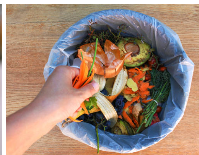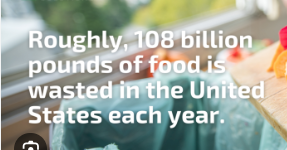Culinary Upcycling in 2024: Transforming Food Scraps into Delicious Dishes
Culinary Upcycling: Transforming Food Scraps into Delicious Dishes
Food waste is a growing concern worldwide, with millions of tons of edible food being discarded each year. Not only does this contribute to environmental issues, but it also represents a missed opportunity to make the most out of the ingredients we buy. Culinary upcycling—using trimmings, food scraps, and often-discarded parts of fruits and vegetables—is a powerful way to reduce waste while creating flavorful, nutritious dishes. This approach not only saves money but also encourages creativity in the kitchen, turning what was once considered waste into something extraordinary. In this article, we’ll explore practical tips for upcycling common food scraps and present a recipe that puts these ideas into action.
The Benefits of Culinary Upcycling
Culinary upcycling is more than just a trend; it’s a sustainable practice that benefits the planet, your wallet, and your health. Here are some of the key advantages:
- Reduces Food Waste: By finding creative uses for peels, stems, and other scraps, you can significantly cut down on the amount of food you throw away.
- Saves Money: Utilizing every part of your ingredients means you’re getting the most value out of your purchases, ultimately saving money on groceries.
- Adds Nutritional Value: Many food scraps are packed with nutrients. For example, carrot tops are rich in vitamins, and citrus peels contain beneficial antioxidants.
- Encourages Creativity: Upcycling challenges you to think outside the box, transforming everyday kitchen scraps into gourmet ingredients.
Practical Tips for Culinary Upcycling
Here are some practical ways to upcycle food scraps into delicious dishes:
Veggie Scraps for Broth:
Collect vegetable trimmings like onion skins, carrot tops, celery ends, and herb stems to make a rich, flavorful vegetable broth.
Store them in a bag in your freezer and make broth once you have enough.
Citrus Zest and Peels:
Don’t toss those citrus peels!
Use the zest to add brightness to baked goods, salads, or marinades. You can also candy the peels or infuse them into oils and vinegars.
Stale Bread to Croutons or Breadcrumbs:
Transform stale bread into crunchy croutons or grind it into breadcrumbs for a homemade, zero-waste addition to soups, salads, or casseroles.
Apple Peels and Cores for Syrup or Vinegar:
Apple scraps can be simmered with sugar and water to make a sweet apple syrup or fermented to create apple cider vinegar.
Herb Stems in Pesto:
Don’t discard those herb stems—they’re packed with flavor.
Blend them into pesto, chimichurri, or add to soups and stews for extra depth.
Carrot Tops for Pesto or Chimichurri:
Carrot tops are often discarded, but they’re edible and delicious. Use them in place of herbs to make a vibrant, slightly peppery pesto.
Potato Peels for Chips:
Save potato peels and roast them with a little olive oil and seasoning to make crispy, healthy chips.
Aquafaba from Chickpeas:
The liquid from a can of chickpeas, known as aquafaba, can be whipped into meringues, used as an egg substitute in baking, or added to soups for extra creaminess.
Watermelon Rinds for Pickles:
Watermelon rinds are perfect for pickling. The result is a crunchy, sweet-and-tangy snack that’s great on its own or as a condiment.
Banana Peels for Smoothies or Baked Goods:
Believe it or not, banana peels are edible and full of nutrients. Boil or blend them into smoothies or use them in baked goods after softening.

Making the Most of Your Ingredients
Culinary upcycling is an excellent way to maximize the potential of your kitchen scraps, turning what was once considered waste into delicious, sustainable meals. By incorporating these practices into your daily cooking, you not only contribute to a more sustainable food system but also add new flavors and textures to your dishes. The next time you’re about to discard those herb stems or vegetable peels, think twice—you might just have the perfect ingredient for your next culinary masterpiece.
The Impact of Culinary Upcycling on the Environment
Culinary upcycling isn’t just beneficial for individuals; it plays a critical role in combating environmental challenges. Food waste contributes to significant greenhouse gas emissions as organic matter decomposes in landfills. According to the United Nations, food waste accounts for about 8-10% of global greenhouse gas emissions. By upcycling food scraps at home, you can help reduce this environmental burden, lowering your carbon footprint one meal at a time.
Additionally, culinary upcycling helps conserve resources used in food production, such as water, energy, and labor. For instance, growing a single apple requires approximately 18 gallons of water. Imagine the impact of tossing apple peels or cores! By creatively repurposing these scraps, you’re honoring the resources that went into growing your food and making a positive environmental difference.
Historical Roots of Culinary Upcycling
Culinary upcycling isn’t a new concept; it has historical roots that stretch back centuries. For generations, resourceful cooks around the world have found ways to make the most of every ingredient, often out of necessity. For instance, Southern cuisine in the United States includes dishes like collard greens cooked with pork bones, reflecting a tradition of using every part of an ingredient. In Italy, stale bread is often used in panzanella, a rustic salad that turns day-old bread into a fresh, vibrant dish.
During World War II, food rationing pushed home cooks to be even more inventive, repurposing leftovers and scraps into nourishing meals. Today, as we face modern environmental challenges, this age-old wisdom is making a comeback, reminding us that creativity in the kitchen is not just about fancy techniques but also about making the most of what we have.
Upcycling Beyond the Kitchen: Composting and Beyond
While many food scraps can be upcycled into dishes, some, like onion skins or avocado pits, might not have a culinary use. This is where composting comes in. Composting food scraps turns organic waste into nutrient-rich soil, perfect for gardening and growing your own produce. By composting, you complete the food cycle, returning valuable nutrients to the earth and reducing waste.
Innovative companies are also exploring ways to upcycle food waste beyond home kitchens. For example, some breweries are making beer from surplus bread, and certain snack brands are crafting chips from upcycled vegetable pulp. These initiatives showcase the broader potential of upcycling, inspiring us all to rethink waste in new and inventive ways.
Upcycling in the Modern Kitchen: Tools and Techniques
To successfully integrate upcycling into your cooking routine, consider a few essential tools and techniques that can help you make the most of your scraps:
- Freezer Bags or Containers: Keep a dedicated bag or container in your freezer for vegetable scraps that can be used for broth. Once it’s full, you’re ready to make a batch of homemade stock.
- Microplane or Zester: A microplane makes it easy to zest citrus peels, which can be used fresh or dried for later use. This tool also works wonders on hard cheeses and stale bread for making breadcrumbs.
- Blender or Food Processor: A powerful blender can help turn tougher scraps like banana peels or herb stems into smooth purées or pesto. It’s a game-changer for creating sauces, soups, and even desserts from unexpected ingredients.
- Dehydrator: If you’re serious about reducing waste, a dehydrator is an excellent investment. You can dry citrus peels, herbs, and even fruit scraps to use as flavorings, garnishes, or snacks.
- Mason Jars for Infusions: Use mason jars to infuse oils, vinegars, or spirits with leftover herbs, citrus peels, or fruit scraps, creating your own custom flavors for cooking and cocktails.
Expanding Culinary Upcycling: Embracing New Ingredients
Culinary upcycling can inspire you to explore ingredients you might not have considered edible. For example, did you know that corn cobs can be used to make corn stock? This flavorful base can enhance soups and risottos with a subtle sweetness. Similarly, broccoli stems, often discarded, are delicious when thinly sliced and stir-fried, adding a crunchy texture to your dishes.
Another innovative idea is to use tomato seeds and jelly, usually discarded, as a base for sauces or dressings. These parts of the tomato are packed with umami flavor and can add a delightful burst of taste to your culinary creations. Exploring these overlooked parts of familiar ingredients can open up a world of new flavors and textures, elevating your cooking in surprising ways.
A Community Movement: Upcycling Together
Culinary upcycling is not just a solo endeavor—it’s a community movement. Farmers’ markets, community gardens, and food-sharing networks are all places where upcycling thrives. Many local initiatives aim to reduce food waste by encouraging people to trade or donate their surplus produce, creating a network of support and sustainability.
Participating in these community efforts can deepen your understanding of food waste and inspire you to try new upcycling techniques at home. It’s also a great way to connect with like-minded individuals who share a passion for sustainable living and creative cooking.

Embrace the Upcycle Challenge
As you incorporate culinary upcycling into your routine, challenge yourself to find new ways to repurpose ingredients you might normally discard. Turn a habit into a hobby, experiment with new flavors, and get your family involved in the process. Kids, especially, can have fun learning about where food comes from and how to use every part of it—making upcycling not only a sustainable practice but also an educational experience.
Culinary upcycling invites you to look at your kitchen scraps not as waste but as opportunities to create something new and exciting. By embracing this mindset, you’ll not only enjoy the satisfaction of reducing waste but also discover a whole new world of flavors, textures, and culinary possibilities. So the next time you’re about to toss that apple core or carrot top, remember: it’s not just trash—it’s the beginning of your next delicious dish.

